A hundred years ago, Hastings became a different place. A painter and decorator in the local building trade found life in the town so dreadful that he started putting together a vivid description of it in a novel that was to change British society – and turn Hastings into Mugsborough.
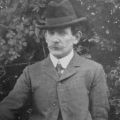 |
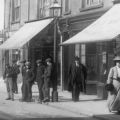 |
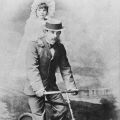 |
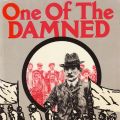 |
 |
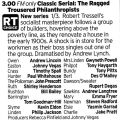 |
Robert Tressell’s picture of the horrors and miseries of Edwardian Mugsborough in The Ragged Trousered Philanthropists helped inspire the 1926 General Strike, the election of the 1945 Labour Government that created today’s welfare state, and the rise of militant trade unionism in the 1960s and 70s which seemed to almost threaten capitalism itself - almost.
What follows is a brief history of The Ragged Trousered Philanthropists and Robert Tressell; the story can be seen in more detail in Tressell: His Life and Times ... All quotes are from Fred Ball’s biography of Tressell, 'One of the Damned' 1979 edition.
The Ragged Trousered Philanthropists was first published in 1914 in edited form, and had an immediate impact, despite costing six shillings, a day’s pay in the building trade. Since then, the book has appeared in over a hundred different formats, reprints and languages, including Japanese. Penguin published it in shortened form in 1940, and the first full version of the 250,000 word manuscript was published in 1955, by the left-leaning Lawrence and Wishart.
The Ragged Trousered Philanthropists is a working class novel: a story with a message, written for working class people, by a man who had become one of them. Many New Labourites after the 1997 general election found the book uncomfortable: its sentiments were too blunt, its story-line unsophisticated, the emotions too crude and the whole thing apparently out-of-date. But the Labour government’s failure to fulfil the hopes of the working class brought a renewed interest in the novel, with several new paperback editions being published.
In Hastings itself, the book is just as alive and powerful now as when it first appeared. And on the streets of the town it is clear that The Ragged Trousered Philanthropists was as much a factual documentary as a novel. Many of the buildings and settings described by Tressell can still be seen, along with descendents of the philanthropists.
Tressell himself was not a local working man. He was born in Dublin in April 1870 as Robert Croker, probably the son of a well-off retired Irish police officer and landowner. After his father died, Robert adopted his mother’s maiden surname, Noonan. Tressell - a re-spelling of trestle, as in trestle-table - was the name he used only as an author, to conceal his identity.
Tressell as a teenager fell out with his mother, and refused to be educated at Trinity College, Dublin, because this would have been paid for by the family’s rental income, which he considered immoral. He emigrated to South Africa in the late 1880s, starting life afresh as a decorator and signwriter in Cape Town, the capital of Britain’s Cape Colony. He married 18-year old Elizabeth Hartel in 1891 and his only child, Kathleen, was born a year later. But in 1894 Tressell found Elizabeth was having affairs, so he moved alone to Boer-controlled Johannesburg, in the Transvaal. Tressell divorced Elizabeth in 1897, taking custody of Kathleen, whom he was to look after on his own for the rest of his life.
Johannesburg was a rapidly expanding gold-mining city, where profit-obsessed employers ruthlessly exploited their workers in the most extreme manner. Tressell took an active part in the trade union and socialist movements to try limit this. He also became involved in the political background to the struggle that was to become the 1899-1902 Boer War, when British and Dutch Boer imperialists fought for control of the southern tip of Africa and its resources, especially gold and diamonds. Robert, with his Irish anti-British sentiments, was one of the Irish settlers who supported the Boers.
It is not known what Tressell did during the Boer War after it began in late 1899, but by September 1901 it seemed the British were winning, and he and Kathleen left South Africa with his sister Adelaide and her son Arthur, who had joined him a few months before.
Another of Tressell’s sisters, Mary, ran a school for the blind in central St Leonards, and she had written to him, inviting him to come to ‘dear, sunny Hastings’. As Tressell was suffering from bad chest pains, later proving to be tuberculosis, Hastings was a healthy place to go.
Thirty one year old Tressell and Kathleen, then aged nine, plus Adelaide and Arthur, probably arrived in Hastings in late 1901. They first stayed briefly with sister Mary in her flat at 38 Western Road, and then the four moved to 1 Plynlimmon Road on the West Hill, which today has a plaque on it. Late in 1902 they all moved to the top flat at 115 Milward Road, just below Plynlimmon Road, which also has a plaque.
Tressell and Kathleen moved on their own from there around 1906, staying temporarily in at least two places in St Leonards, before taking the top flat above a cycle shop at 241 London Road, near Tower Road, in late 1907 or early 1908. It was in the front room of this flat that Tressell wrote most, if not all, of the book. This is commemorated by a plaque next to the front door.
Number 241 was to be Tressell’s last home with Kathleen. He finished the book in the spring of 1910 but no publisher would accept it, so in August that year he went to Liverpool, planning to emigrate to Canada. His chest pains worsened, however, and he was admitted to Liverpool Royal Infirmary, where he died of tuberculosis on 3 February 1911, aged 40.
After Tressell’s death Kathleen kept the 250,000 word hand-written manuscript in a box. One day in 1913 she showed it to a friendly journalist, who eventually found a publisher, Grant Richards, willing to handle it. He bought the manuscript from Kathleen, paying £25 for it and for copyright. Richards then cut the number of words down to 150,000 and published The Ragged Trousered Philanthropists for the first time on 23 April 1914.
This first edition cost six shillings, beyond the means of the average working person. Then in 1918 Richards published a 90,000 word second edition, priced at just one shilling. This made the book affordable and it soon became very popular.
Hastings workman Fred Ball first read the novel in 1936. He began collecting information on Tressell and on the local setting of the story. In 1946 Ball and a small group of friends managed to buy the manuscript, with the aim of publishing it in full. Ball’s first Tressell biography, Tressell of Mugsborough, was published in 1951 by Lawrence and Wishart, who eventually published the manuscript unedited in 1955. This played a key role in stimulating and maintaining interest in the The Ragged Trousered Philanthropists over the following decades.
In addition, Ball continued collecting information on Tressell and Edwardian Hastings. His second biography, One of the Damned, was published in 1973, with a second edition in 1979, giving a detailed account of Tressell, his background and the significance of the novel.
The Ragged Trousered Philanthropists depicts the lives of the people Tressell worked alongside in the Hastings building trade. His fellow workers remembered him as being quite small, an atheist, very cultured, a reader of a wide variety of books, kind to his friends and fond of cricket. He had a slight Irish accent and could speak at least seven languages. On weekdays he dressed like his mates, except that he always wore his trilby hat to work, never the cap common to workmen. His skills as a painter and signwriter made it easier for him to find work than less-skilled men. But in most ways, a young electrician said, Tressell “never gave any inkling that he was other than an ordinary member of the working class”. [Ball 33] However his dislike of his employers, his increasing chest pains and his responsibilities as a single parent made life more difficult as the years went by.
Tressell’s first job was with Bruce & Co, a firm of engineers and builders, with an ironmongers shop at 2 York Buildings, opposite today’s McDonalds. But he had a hard time at Bruce, and quit late in 1902 or early 1903. He then tried unsuccessfully to find reasonable work in London.
The Tressell biographer Fred Ball believed Tressell’s new working life in Britain had an “obviously profound effect” on him, “making him put work and conditions of its performance at the centre of his book. It is from the shock of his experiences with Bruce & Co that I date the real origin of the passionate sense of outrage which was to inspire and light up The Ragged Trousered Philanthropists, and, perhaps, the beginning of the deep sense of loss which was to feel over the rest of his short life.” [Ball 42]
By early 1903 Tressell was employed by another Hastings building firm, Burton & Co, of 88 Stonefield Road, opposite the bottom of a flight of steps from Milward Road, at the top of which was Tressell’s flat. In 1906 he left Burtons and went to work for Adams & Jarrett (Makehaste and Sloggem in the novel), based in a shop in central St Leonards. Adams & Jarrett are the last builders that RT is known to have worked for before leaving the town in 1910.
Tressell was employed on many buildings all over the town, although these were not recorded. But it is known that they included the former St Andrews Church that stood in Queens Road, where Morrison’s petrol station is today, and part of Tressell’s wall-painting there is preserved in Hastings Museum. This is the only known surviving example of his skill as a painter.
Much of the building work described in the book took place in upper St Leonards, especially around The Green and Hollington Park Road, then the wealthiest area of the town. The main setting in the novel is called The Cave, believed in real life to have been mainly modelled on the large detached house Val Mascal in Gillsmans Hill, plus some ingredients from other nearby properties, especially Filsham Lodge and West Dene.
These were the homes of the rich. The well-off could also be found living in the surrounding parts of St Leonards, around the southern end of Alexandra Park and up through the Blacklands area to the St Helens part of the Ridge. The workers who were looking after all these delightful homes lived in their own impoverished districts: Hollington, Silverhill, Bohemia, Halton, the Old Town and, worst of all, Ore.
The former rural village of Ore was so poverty-stricken and deprived that a doctor said in 1905 that it was worse than any part of London where he had worked. In winter, the Ore Penny Dinner Fund gave free food every schoolday to over 200 hungry children whose tattered clothes bore witness to their poverty. The starving and impoverished residents of Ore overlooked an even worse scene: the Hastings district workhouse. On a typical day in the winter of 1905/6 the workhouse had 396 ‘inmates’ (semi-prisoners), plus 217 ‘vagrants’ who had to labour for their overnight shelter.
It was the appalling conditions in the homes and working lives of ordinary people, plus the result of the general election of January 1906, which sparked off a socialist movement in Hastings. Nationally, the election saw the Tory government swept aside by a massive swing to the Liberals – but Hastings was one of a handful of seats where the Liberal MP lost to a Tory. And this millionaire businessman was only elected because he was backed in the ballot boxes by many of the working class people he was exploiting: The Ragged Trousered Philanthropists.
To the new Hastings socialists this election showed parliamentary democracy was a dead-end, and something more radical was needed. Tressell’s comrades took the struggle onto the streets of the town, and eventually lost. Tressell used the weapon of the pen, and almost won.
Many members of the 20th century radical Labour movement were deeply moved by what they read in The Ragged Trousered Philanthropists. Tony Benn said in a lecture in Hastings in 1986: “Tressell’s contribution to the reawakening of hope is that he gave us a torch to pass on from generation to generation. He gave us a lamp to light the way. He showed us that there is light at the end of the tunnel. Robert Tressell is a teacher for our time who speaks from the past to give us hope for the future.”
In 1990 I asked Ron Todd, then general secretary of Britain’s biggest union, the Transport and General Workers Union, for his feelings about the book’s effect on trade union leaders. He said: “I cannot remember any general secretaries who have not had, as part of their learning, reading the The Ragged Trousered Philanthropists. It’s been a stock book in every trade unionist’s home that I can remember. When I first read the book it was when I was a Ford shop steward, and quite frankly it had a great impression on me.”
A survey of 160 MPs in August 1997, just after Labour came to power, found that The Ragged Trousered Philanthropists was joint winner of the title best political book (shared with Machiavelli’s The Prince). In June 2008 BBC Radio 4 serialised the book, running three one-hour episodes of the “socialist masterpiece” at the key time of 3pm on Sundays. The Radio Times said in its foreword: “Fat-cat bosses cream off the profits while their workers accept longer hours for less pay in order to keep their jobs. There’s a modern resonance here.”
But the socialist revolution that was the aim of Tressell and his comrades now seems further away than a century ago. What went wrong? Could there have been something missing from the way in which The Ragged Trousered Philanthropists described the problem of capitalism, thereby helping the coming generations of activists go into the dead-end of the 1997 Labour government?
A beauty - and weakness - of The Ragged Trousered Philanthropists is the way Tressell describes the problem of capitalism in a graphic, powerful and simple manner. As he intended, the problem could then be understood and related to by the least literate of working people. But largely missing from his description are the complexities of racism, imperialism, environmental awareness, feminism and the power of the freemasons. Readers did not have to come to terms with any feelings they might have of not relating to black or Irish people, of a lack of interest in the environment or of difficulties there might be in male/female relations. And freemasonry is a widespread, ingrained culture, whose basic views and attitudes can be seen at all levels of British society.
The absence of these complex issues from the drama of the book made it easier to read and understand, but may have ultimately have played a role in making the powerful novel unsuccessful in its basic aim of overthrowing capitalism. Today’s philanthropists wear better clothes than a century ago, but their hopes are just as ragged.